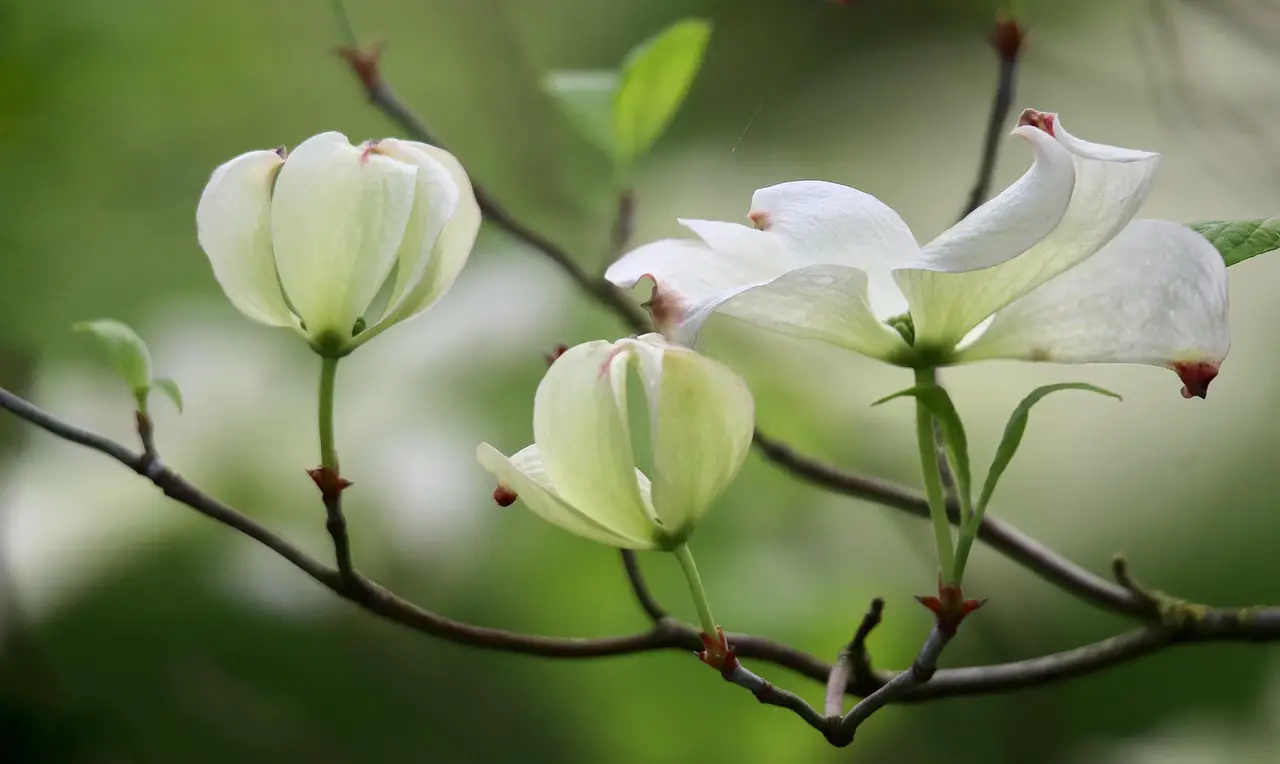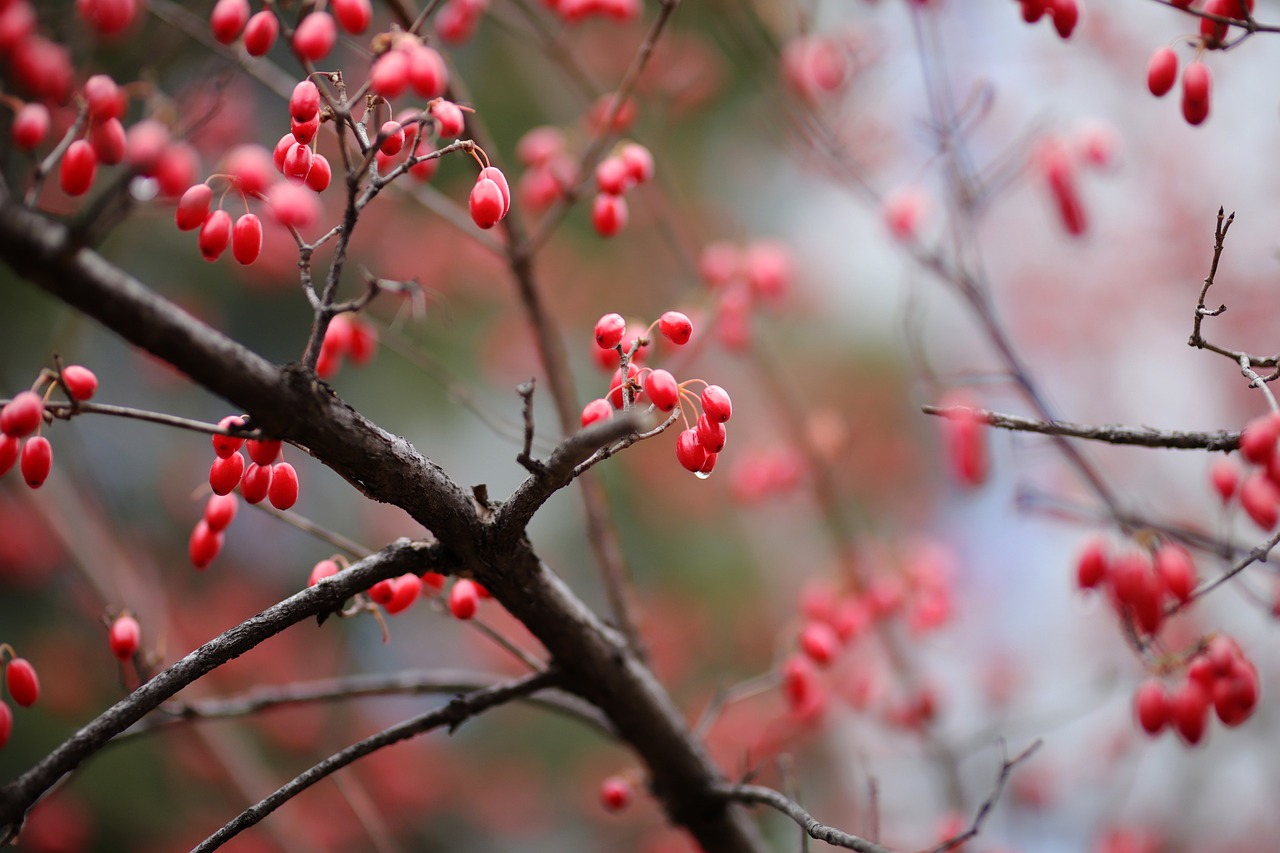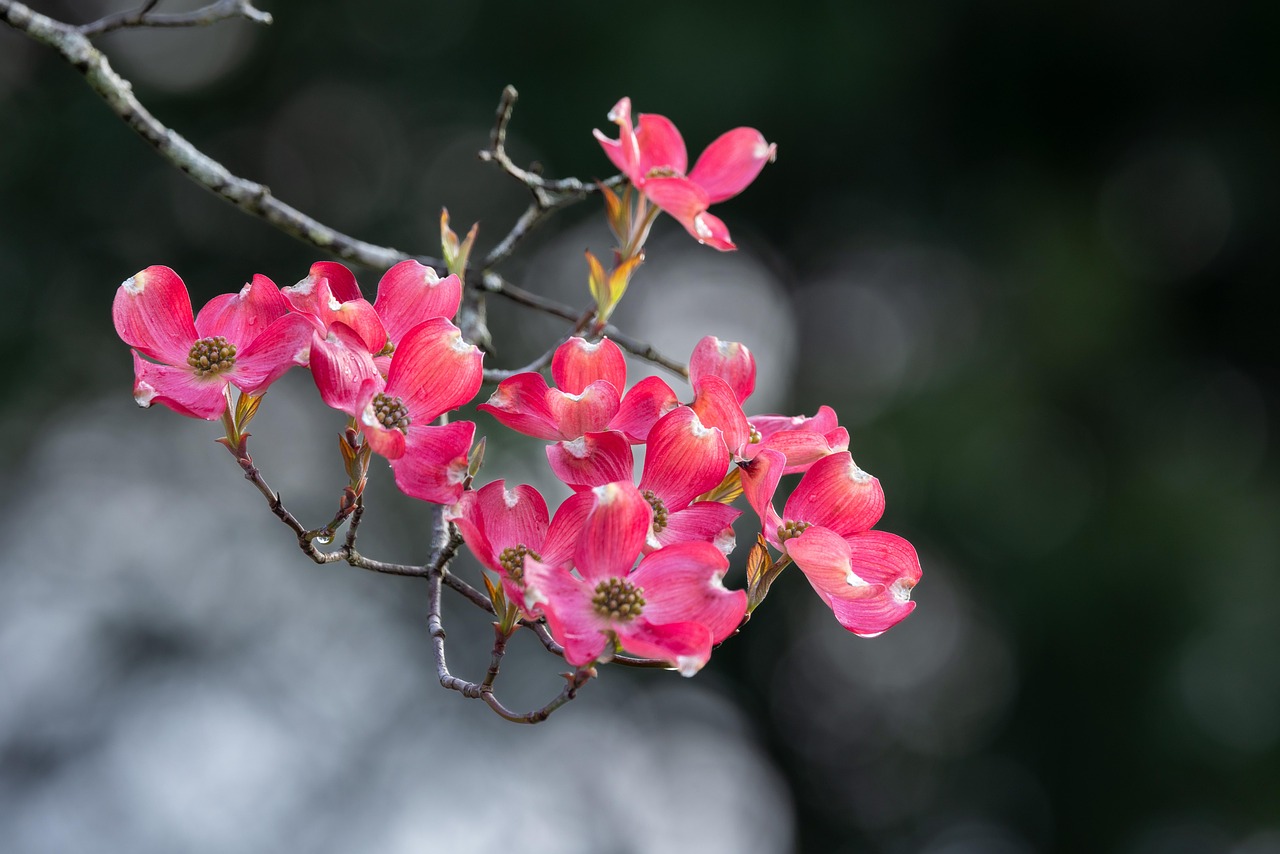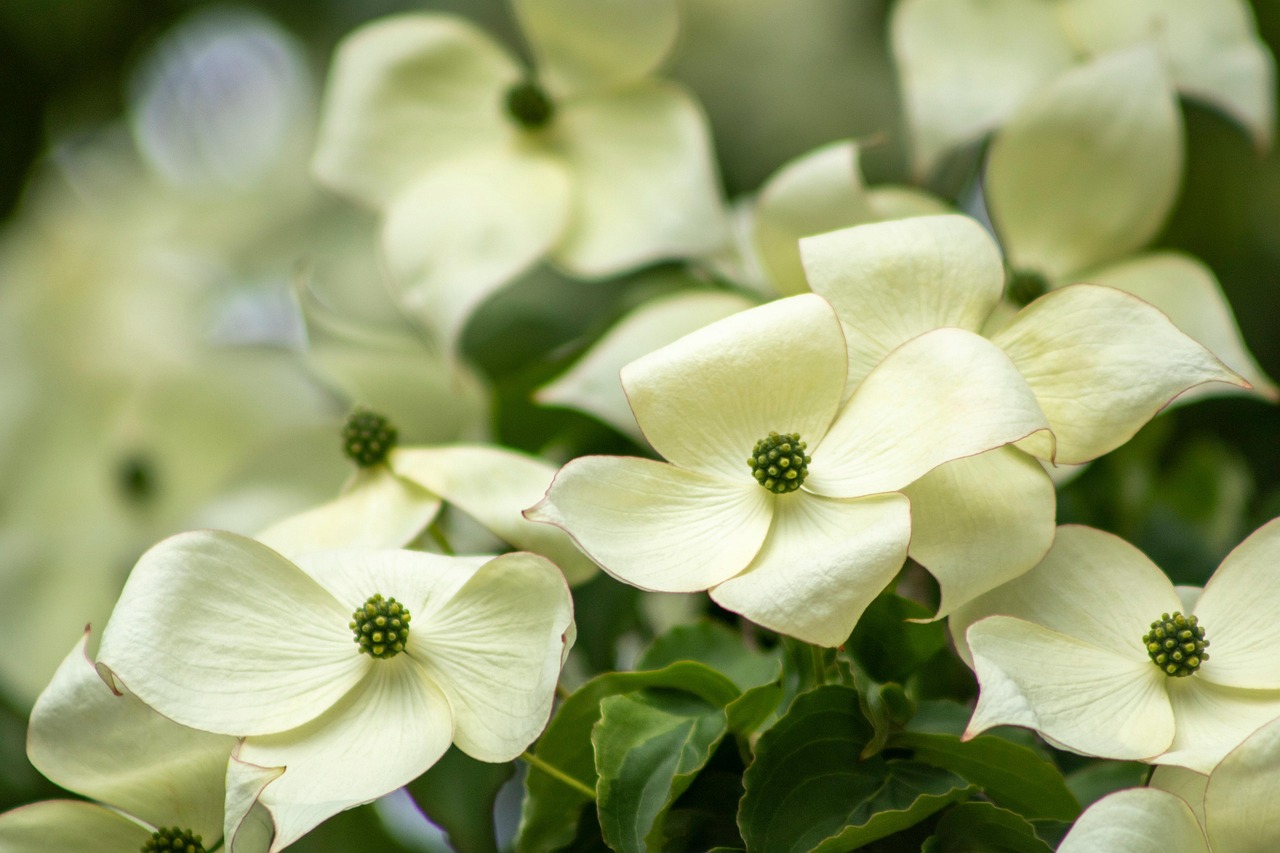The growth rate of Dogwood trees typically ranges from 1 to 2 feet per year, making them a moderately growing option for landscape selections. Their growth can vary based on species, environmental conditions, and care practices.
Understanding Dogwood Trees
Dogwood trees are beloved for their stunning blossoms and vibrant fall foliage. These trees belong to the genus Cornus and are prominent in various landscapes across the United States. The most common species include the Flowering Dogwood (Cornus florida) and the Pacific Dogwood (Cornus nuttallii). Each species has unique characteristics that influence its growth and suitability for landscaping.

Their popularity stems not only from their aesthetic appeal but also from their adaptability to different soil types and moisture levels. Dogwoods thrive in well-drained soils and prefer locations with partial shade, although some species can tolerate full sun. This versatility makes them an excellent choice for residential gardens and public parks alike.
Growth Rate Insights
When selecting trees for landscaping, understanding growth rates is essential. The Dogwood tree, known for its moderate growth, typically reaches heights of 15 to 30 feet, depending on the species and growing conditions. Their growth rate can be influenced by several factors, including:
- Soil Quality: Rich, loamy soils promote faster growth.
- Sunlight: Adequate sunlight is vital for healthy growth. While they prefer partial shade, too little light can stunt their development.
- Watering: Consistent moisture is crucial, especially during dry spells.
- Fertilization: Balanced fertilizers can enhance growth rates by providing essential nutrients.
The following table provides an overview of the growth characteristics of some common Dogwood species:

| Species | Height (feet) | Growth Rate (feet/year) | Flower Color |
|---|---|---|---|
| Flowering Dogwood | 15-30 | 1-2 | White/Pink |
| Pacific Dogwood | 20-40 | 1-2 | White |
| Chinese Dogwood | 20-30 | 1-2 | Pink/Red |
| Kousa Dogwood | 15-30 | 1-2 | White/Pink |
The moderate growth rate of Dogwood trees makes them suitable for various landscape designs. They can be planted as focal points, in mixed borders, or as understory trees in larger spaces. However, it is essential to consider their final size when planning your landscape layout.
Factors Influencing Growth Rates
The growth rate of Dogwood trees can vary significantly based on environmental factors. Understanding these elements can help you provide the ideal conditions for your trees to flourish.
Climate: Dogwoods generally thrive in temperate climates. They do best in areas with distinct seasons, including cold winters and warm summers. Extreme temperatures can affect their growth negatively.

Pests and Diseases: Common pests like scale insects and diseases such as anthracnose can hinder growth. Regular monitoring and proper care can mitigate these issues.
Pruning: Proper pruning encourages healthy growth and shapes the tree structure. Removing dead or overcrowded branches allows more sunlight to penetrate the canopy, promoting overall health.
Selecting the right Dogwood species and understanding its growth rate are vital steps in creating a beautiful landscape. By considering environmental factors and providing appropriate care, you can enjoy the beauty of these trees for many years.

Choosing the Right Dogwood Species
When selecting a Dogwood tree for your landscape, understanding the specific characteristics of different species is crucial. Each type offers unique attributes, including growth habits, flower color, and seasonal interest. Choosing the right species can enhance your garden’s beauty and ensure that the tree thrives in its environment.
Common Dogwood Species
Here are some of the most popular Dogwood species along with their distinctive features:
-
Flowering Dogwood (Cornus florida):
This species is widely known for its beautiful white or pink flowers that bloom in spring. It typically grows to about 15 to 30 feet tall and is hardy in USDA zones 5 to 9.
-
Kousa Dogwood (Cornus kousa):
Known for its star-shaped flowers and attractive, textured bark, the Kousa Dogwood can grow 15 to 30 feet tall. It is also resistant to many pests and diseases, making it a resilient choice for gardens.
-
Pacific Dogwood (Cornus nuttallii):
This species is native to the western United States and features large white flowers. It can reach heights of up to 40 feet and thrives in moist, well-drained soils.
-
Chinese Dogwood (Cornus capitata):
This tree has unique, large fruit and blooms with creamy white flowers. It grows to about 20 to 30 feet and is suitable for warmer climates.
Growth Patterns and Development Stages
The growth patterns of Dogwood trees can be broken down into several stages. Understanding these stages can help you manage your tree’s care effectively.
-
Seedling Stage:
This initial stage lasts for the first few years. During this time, the young tree focuses on establishing a strong root system.
-
Youth Stage:
Once established, the tree begins to grow more rapidly. This stage typically lasts from years three to six, where height increases significantly.
-
Maturity Stage:
After about six years, the tree enters maturity. Growth slows down, and the focus shifts to flowering and producing fruit.
-
Old Age:
In the final stage of life, growth may become very slow. However, mature Dogwoods can still add significant beauty to landscapes.
Optimal Growing Conditions
To ensure that your Dogwood tree reaches its full potential, it is essential to provide optimal growing conditions. Here are some key factors to consider:
Soil Requirements
Dogwoods prefer moist, well-drained soils that are rich in organic matter. They can tolerate various soil types but thrive best in loamy soils with a pH between 5.5 and 7.0. Performing a soil test can help determine necessary amendments for optimal growth.
Light Requirements
While Dogwoods can adapt to various light conditions, they generally prefer partial shade. Too much direct sun can scorch their leaves, while too little light may reduce flowering. A location that receives morning sun and afternoon shade is ideal.
Watering Needs
Consistent moisture is vital for Dogwood trees, especially during their early years of growth. It is essential to water deeply but infrequently to encourage deep root development. Mulching around the base can help retain soil moisture and regulate temperature.
Pest Management and Disease Prevention
Dogwoods can be susceptible to certain pests and diseases that may impact their growth rate. Awareness and proactive management can help maintain healthy trees.
Common Pests
- Scale Insects: These pests can cause leaf drop and weaken the tree. Regular inspections and insecticidal soap treatments may be necessary.
- Aphids: Small sap-sucking insects that can lead to leaf curling. Introducing beneficial insects like ladybugs can help control their populations.
Disease Prevention
Dogwoods are prone to diseases such as:
- Anthracnose: A fungal disease causing leaf spots and dieback. Proper spacing between trees and pruning for air circulation can help prevent outbreaks.
- Crown Gall: A bacterial infection that causes galls on roots and stems. Avoiding injury during planting and maintaining healthy soil can minimize risks.
By understanding the characteristics of different Dogwood species, their growth patterns, optimal growing conditions, and how to manage pests and diseases, you can create a thriving landscape that showcases these beautiful trees for years to come.
Seasonal Care for Dogwood Trees
Proper seasonal care is essential for maintaining the health and vitality of Dogwood trees. Each season presents unique challenges and opportunities for growth. Understanding how to care for these trees throughout the year will ensure they thrive in your landscape.
Spring Care
Spring is a critical time for Dogwood trees as they emerge from dormancy and begin their growth cycle. Here are some key tasks to focus on during this season:
-
Fertilization:
Apply a balanced, slow-release fertilizer to promote healthy growth. Look for fertilizers with equal parts nitrogen, phosphorus, and potassium.
-
Pruning:
Prune any dead or damaged branches before new growth begins. This encourages healthy development and improves air circulation.
-
Pest Monitoring:
Keep an eye out for early signs of pests like scale insects and aphids. Early detection allows for timely treatment.
Summer Care
During the summer months, the focus shifts to maintaining moisture levels and managing pests:
-
Watering:
Ensure consistent watering, especially during dry spells. Deep watering is preferable, as it encourages deeper root growth.
-
Mulching:
Add a layer of organic mulch around the base of the tree. This helps retain moisture, regulate soil temperature, and suppress weeds.
-
Pest Control:
Continue monitoring for pests and diseases. Use organic insecticides when necessary to protect the tree without harming beneficial insects.
Fall Care
Fall is a time for preparation as Dogwood trees prepare for winter dormancy:
-
Fertilization:
Consider applying a fall fertilizer designed for trees. This helps strengthen the tree before it enters dormancy.
-
Leaf Cleanup:
Rake fallen leaves around the tree to prevent disease buildup. Avoid leaving debris that can harbor pests over winter.
-
Watering:
If fall is dry, continue to water the tree until the ground freezes to ensure roots are hydrated.
Winter Care
Winter presents its challenges, but with proper care, Dogwood trees can withstand colder temperatures:
-
Winter Protection:
If you live in a region with harsh winters, consider wrapping the trunk with burlap to protect against extreme cold and sunscald.
-
Avoid Heavy Snow Accumulation:
If heavy snow accumulates on branches, gently brush it off to prevent breakage.
-
Monitoring:
Keep an eye on the trees for signs of damage or disease throughout winter. Early detection makes treatment easier in spring.
Dogwood Tree Landscaping Ideas
Integrating Dogwood trees into your landscape design can enhance aesthetic appeal while providing functional benefits. Here are some creative ideas for incorporating them effectively:
Focal Points
Dogwood trees can serve as stunning focal points in garden beds or yards. Their vibrant flowers in spring and rich fall colors can draw attention and create visual interest.
Mixed Borders
Planting Dogwoods alongside other shrubs and perennials can create a layered look. Consider pairing them with:
- Azaleas: Their spring blooms complement Dogwoods beautifully.
- Hostas: These shade-loving plants work well at the base of Dogwoods.
- Lilies: Adding tall lilies can create height contrast in the border.
Understory Trees
If you have larger trees in your landscape, Dogwoods can thrive as understory trees. They benefit from filtered light while adding depth to shaded areas.
Aesthetic and Ecological Benefits
The inclusion of Dogwood trees in landscapes offers various aesthetic and ecological advantages:
Aesthetic Appeal
The stunning flowers and rich foliage of Dogwood trees provide seasonal interest. Their blossoms herald spring, while fall colors create a vibrant backdrop as they mature.
Wildlife Support
Dogwoods are beneficial for local wildlife. Their flowers attract pollinators such as bees and butterflies, while their berries provide food for birds and small mammals.
By implementing seasonal care routines and creatively integrating Dogwood trees into your landscape, you can enjoy their beauty and benefits throughout the year. Understanding their unique needs will help you cultivate healthy, thriving trees that enhance your outdoor spaces.
Maintaining Dogwood Trees for Longevity
To truly enjoy the beauty of Dogwood trees, it is essential to focus on their long-term health and maintenance. Here are some additional tips to ensure your trees thrive for many years:
Regular Inspections
Conducting regular inspections can help you catch potential problems early. Look for signs of:
- Leaf Discoloration: Yellowing or browning leaves may indicate nutrient deficiencies or water stress.
- Branch Damage: Broken or dead branches should be pruned to maintain tree health and aesthetics.
- Pest Activity: Regularly check the undersides of leaves for pests like aphids or spider mites.
Soil Health Management
Healthy soil is vital for the growth of Dogwood trees. Consider the following practices:
- Composting: Incorporate organic compost into the soil annually to improve nutrient content and structure.
- Mulching: Apply mulch to retain moisture and suppress weeds, which can compete with Dogwoods for nutrients.
- Soil Testing: Conduct soil tests every few years to monitor pH and nutrient levels. Adjust soil amendments based on test results.
Water Conservation Techniques
Implementing water conservation techniques can help maintain healthy Dogwood trees while being mindful of environmental impacts:
- Rain Gardens: Create a rain garden to manage runoff and provide supplemental irrigation during dry spells.
- Xeriscaping: Integrate native plants that require less water alongside your Dogwoods to reduce overall water usage.
Community and Educational Resources
To deepen your understanding and care for Dogwood trees, consider leveraging community resources:
- Local Extension Services: Many areas have agricultural extension services that can provide guidance specific to your region.
- Workshops and Classes: Look for local gardening workshops that focus on tree care and landscaping.
- Online Forums and Groups: Engage with online gardening communities where you can share experiences and gain insights from fellow gardeners.
Conclusion
The Dogwood tree is a remarkable addition to any landscape, offering beauty, ecological benefits, and a moderate growth rate that suits many gardening styles. By understanding the specific needs of different Dogwood species, you can select the right variety for your space and ensure their health through proper seasonal care.
Moreover, maintaining soil health, conducting regular inspections, and utilizing community resources will further enhance the longevity of your Dogwoods. Their vibrant flowers in spring, lush foliage in summer, stunning fall colors, and winter interest make them a focal point throughout the year.
Incorporating Dogwood trees into your landscape not only enhances your outdoor aesthetic but also supports local wildlife, creating a balanced ecosystem. With the right care and attention, these beautiful trees can thrive for generations, adding value and enjoyment to your property.
Ultimately, whether you are a seasoned gardener or a novice, embracing the beauty and benefits of Dogwood trees will enrich your gardening experience and contribute positively to your landscape.
